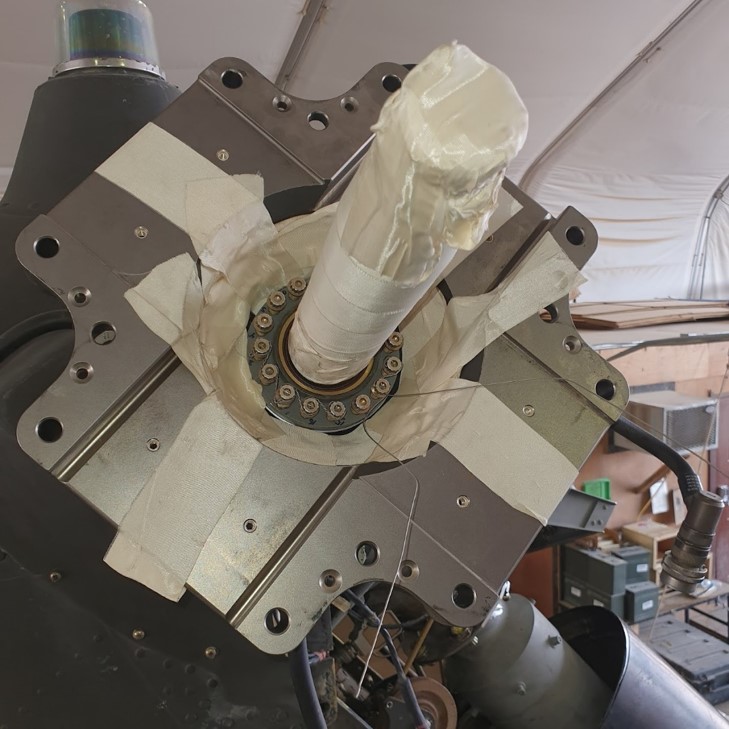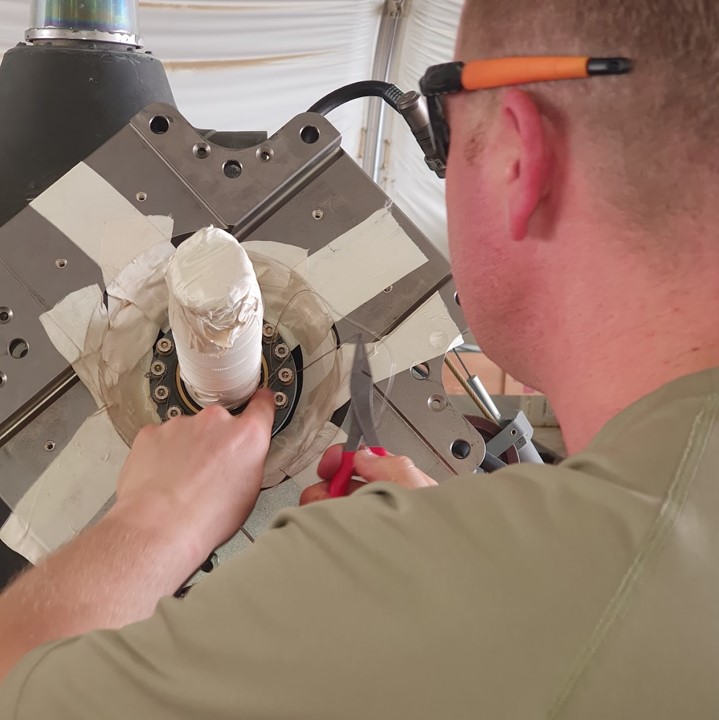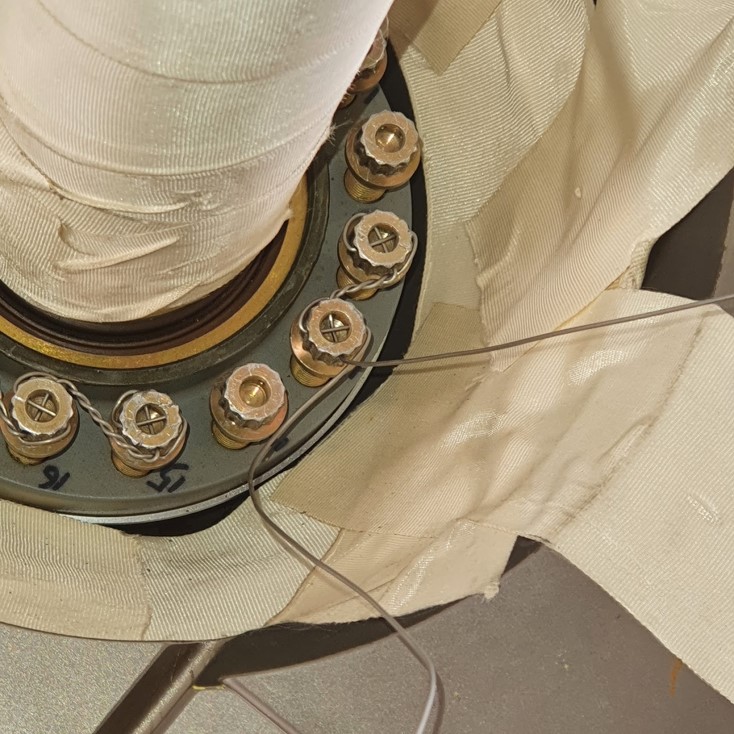 Photo courtesy of 401st AFSB
Photo courtesy of 401st AFSBDear Editor,
As LARs, we’re often called subject-matter experts (SMEs). However, as trainers, we sometimes come across a really good maintenance technique in which the trainer gets trained by the maintainer.
While in the field assisting Soldiers with the 9- to 11-hour re-torque inspection on the Black Hawk helicopter tail rotor, I watched as the mechanics replaced the lock wire around the inboard retention plate of the tail rotor assembly.
Those who’ve performed this task know how easy it is for lock wire to scratch the surface of the inboard retention plate. To protect the surface of the inboard retention plate from scratches, maintainers took the time to cover the inside of the retention plate area with tape.
The pictures below show the tape on the inboard retention plate of the tail rotor assembly prior to lock wiring.
 Protect inboard retention plate with tape
Protect inboard retention plate with tape

Tape protects inboard retention plate from lock wire scratches
 Use tape before lock wiring around retention plate
Use tape before lock wiring around retention plate
Would you please share this maintenance tip with your readers?
Charles “Chazz” Pope
AMC-LAR, Rotary-Wing Multi Airframes
Editor’s note: We absolutely will, Chazz. Thanks for passing along this procedure. PS Magazine is always happy to share ideas that help prevent accidental damage while conducting maintenance. Kudos, too, to the maintainers of TF Wolfpack.
Maintainers, you can find the related procedures in TM 1-1520-237-23&P (Jan 21) Revision 1, WP 0296; TM 1-1520-246-23 &P (Jun 21) Revision 1, WP 1877; and TM 1-1520-280-23&P (Mar 21) Revision 3, WP 0309.
Also, make a note to record an entry on DA Form 2408-13-2, Related Maintenance Actions Record, that protective tape has been applied to the inside area of the inner retention plate so that Quality Control (QC) can verify the protective tape is removed prior to installing the outer retention plate.